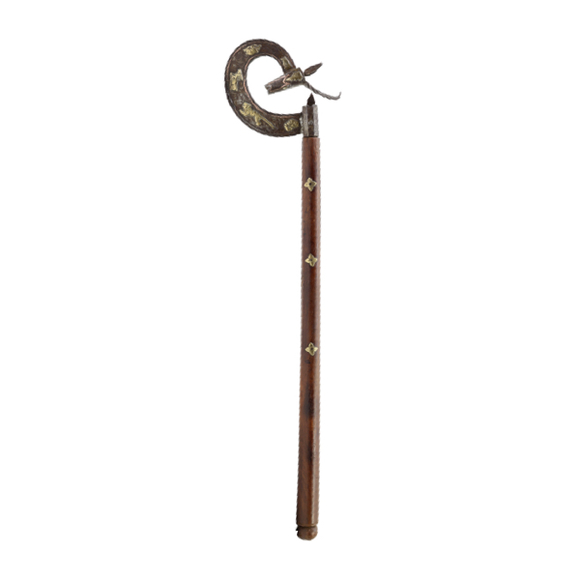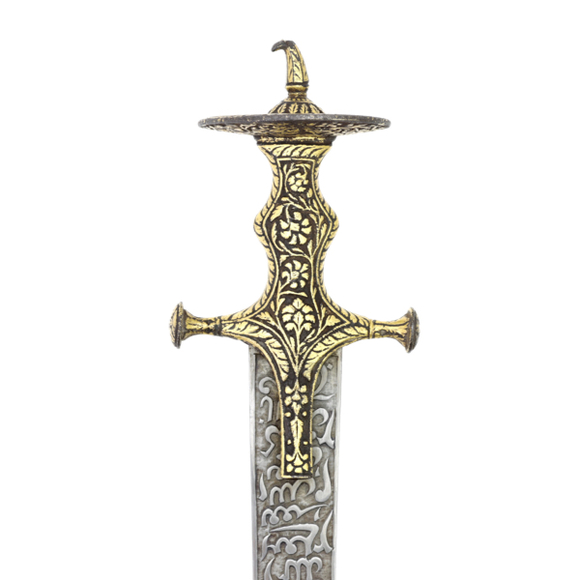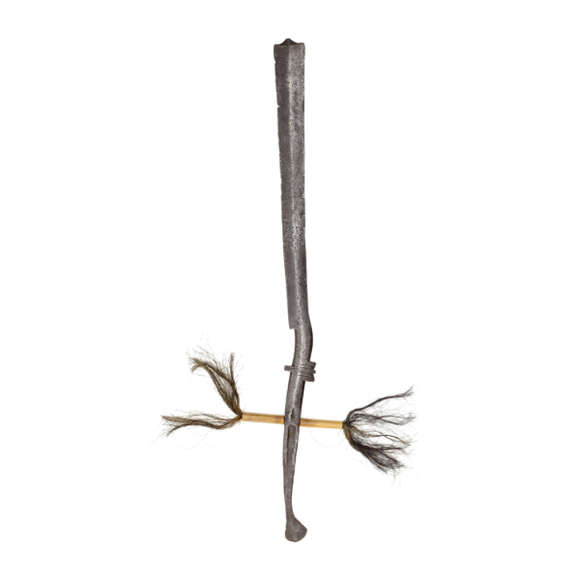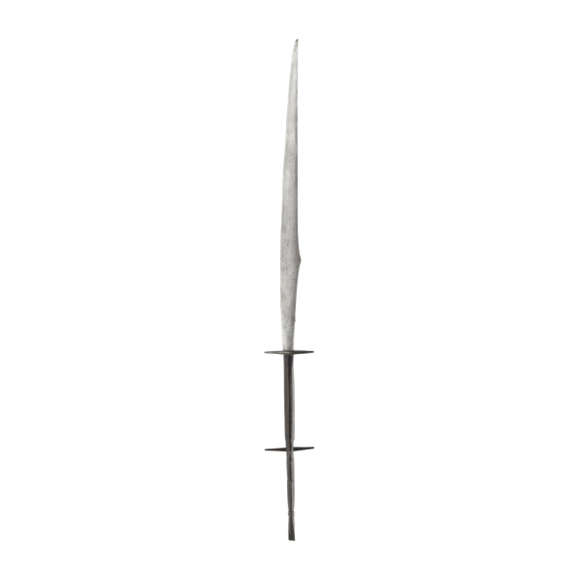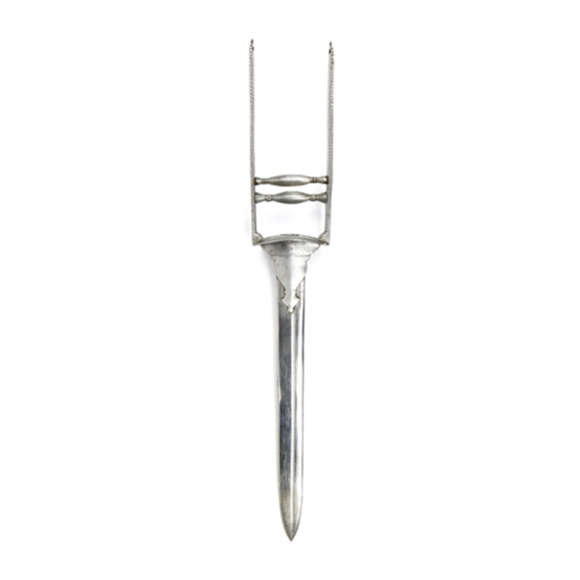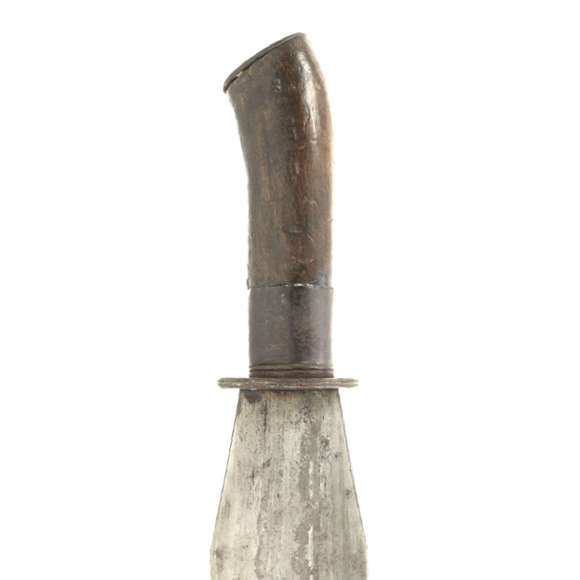An enigmatic type of axe, this one probably from tribal north India.
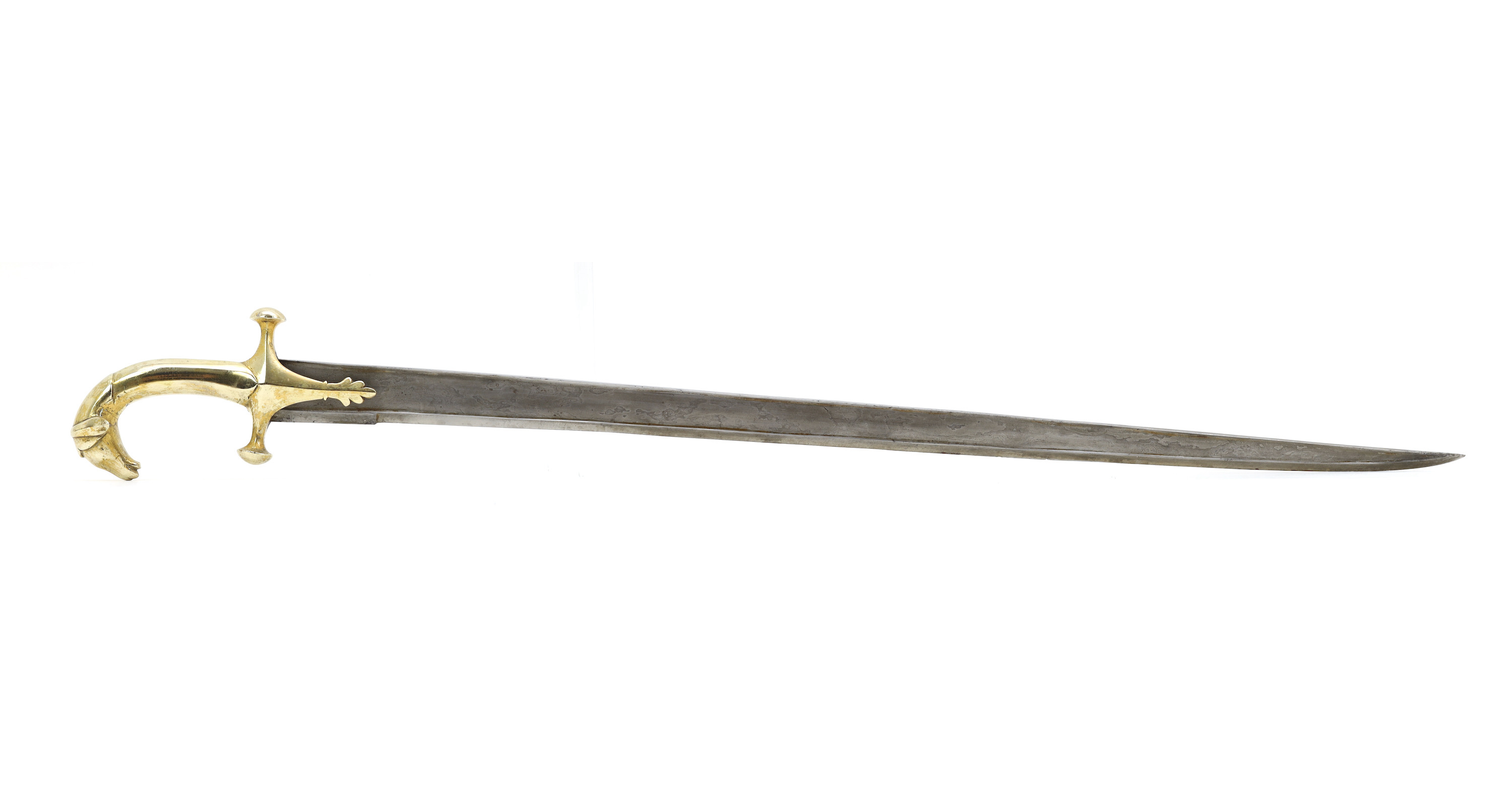
82.7 cm
71.5 cm
Base 8 mm
Middle 7 mm
5 cm from tip 6 mm
Base 40.5 mm
Middle 27 mm
5 cm from tip 14 mm
852 grams
15.8 cm from crossguard
Metal alloy, iron, steel, resin, 24 carat gold
North India, probably Punjab region
18th or 19th century
European antique art market
Description
A most unusual sword. The blade is basically styled after the Khyber sword of the Pashtun tribes living in the Khyber Pass, but it shows some important departures from the classic Khyber design. Similarities are in the overall blade profile, being fairly straight and tapering to a very sharp point. Compared to the classic Khyber, it's more narrow and elongated.
The cross-section is similar to a Khyber as well, with a pronounced T-spine for added rigidity and a secondary edge bevel. The large sunken central panel is not typical for Khyber swords. A final detail to consider is the edge starting further up the blade, forming a ricasso, a typical North Indian feature.
The blade is forge folded, with an inserted high carbon plate visible at the edge, and scattered cloud shapes across the surface of the sunken panel.
Hilt
The striking hilt is of an unknown metal alloy, probably cast, and then gilt. Its outer surface tested 24k gold. It has a talwar style crossguard and langets, a facetted grip section, turning into a pistol hilt with a long-haired goat head, possibly representing a female Indian Attappady black goat.
The over style of the hilt reminds of some wild hilt designs seen on a drawing collected by Ananda Coomaraswamy in Lahore. It was sold by "S. Bahadur Shah, Dealer of Curiosities, Mochee Gate, Lahore", now in the Boston Museum of Fine Arts, accession number: 17.2643.
Elements seen on this drawing are various animal heads, but also langets with palmette endings as seen on our example.
Dating & attribution
It was perhaps made for a well-off Pashtun who preferred this type of blade, but many of its design features point towards Indian manufacture instead, probably in a more metropolitan area. Lahore or Sialkot in the Punjab come to mind as the most likely place of production.
18th or 19th century.
It comes with a custom upright stand.

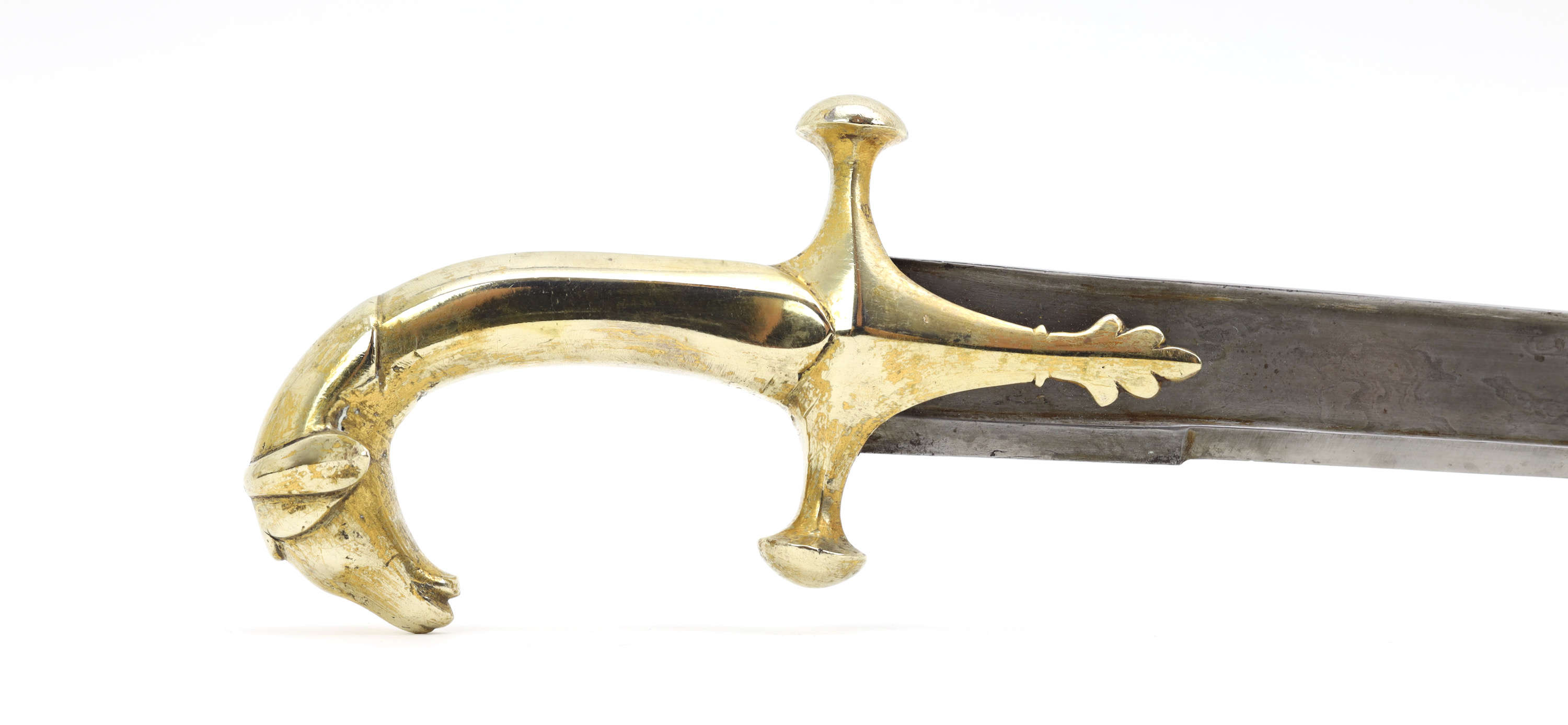



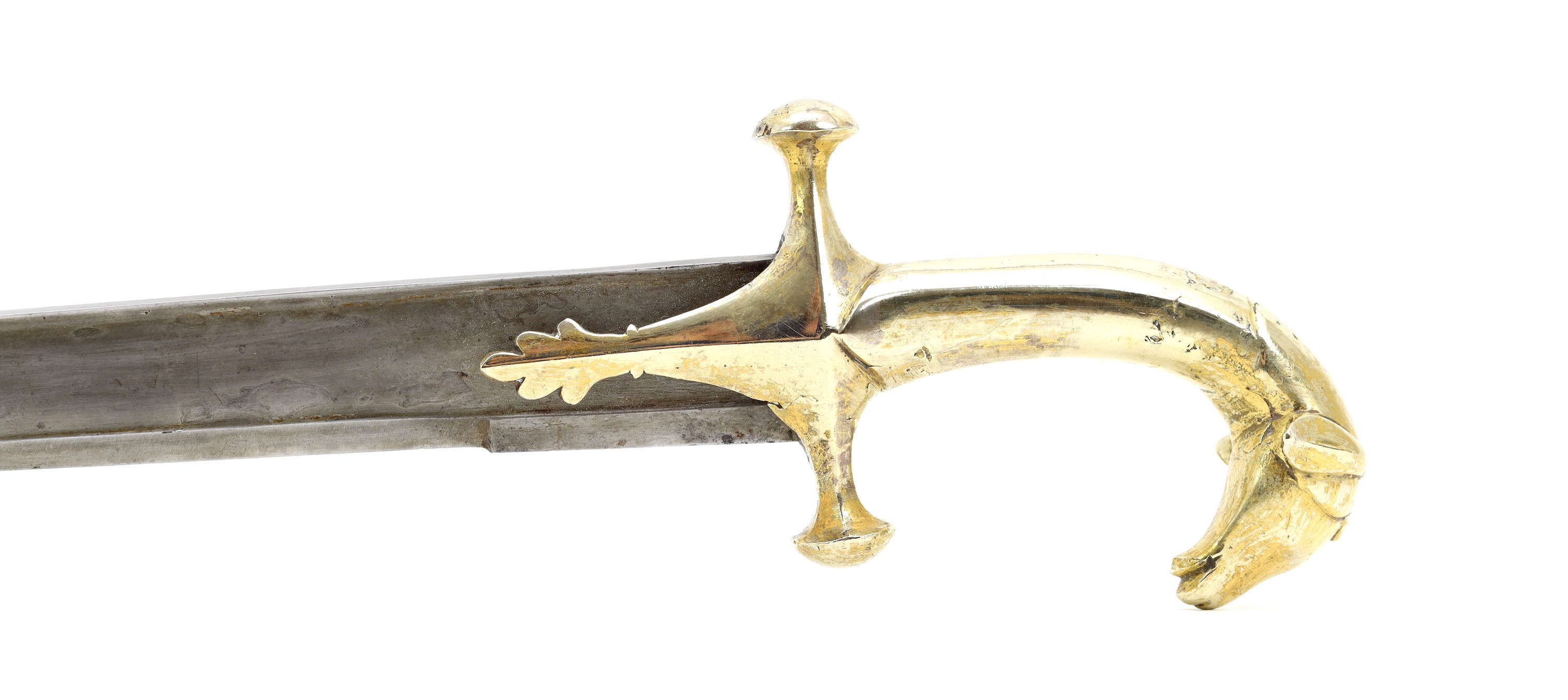


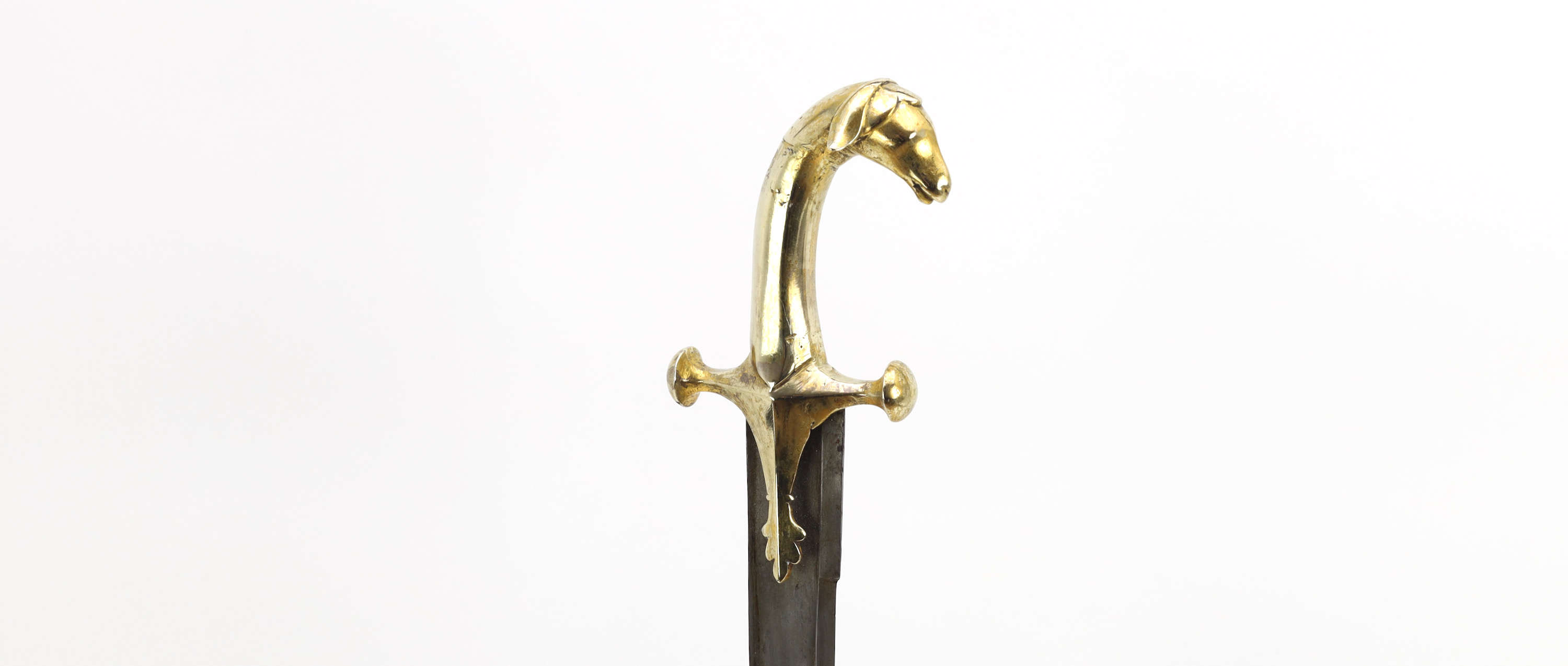
Mentioning the son of a Maharajah and a year corresponding to 1887 A.D.
This peculiar sword was used by the Garo people of Assam for fighting, clearing the jungle, and animal…
These mysterious weapons were already obsolete when the first ethnographers encountered them.
An interesting South Indian style katar with an imported European blade.

